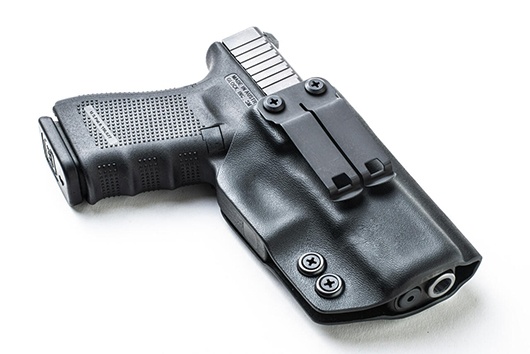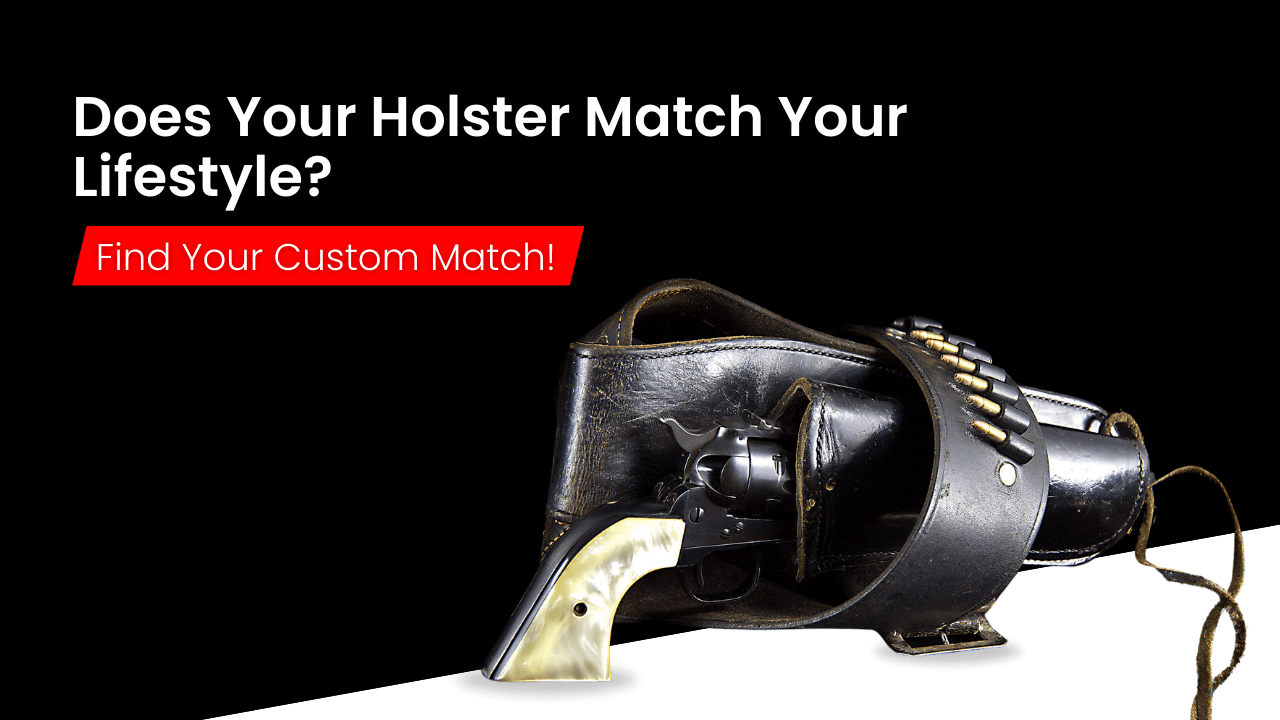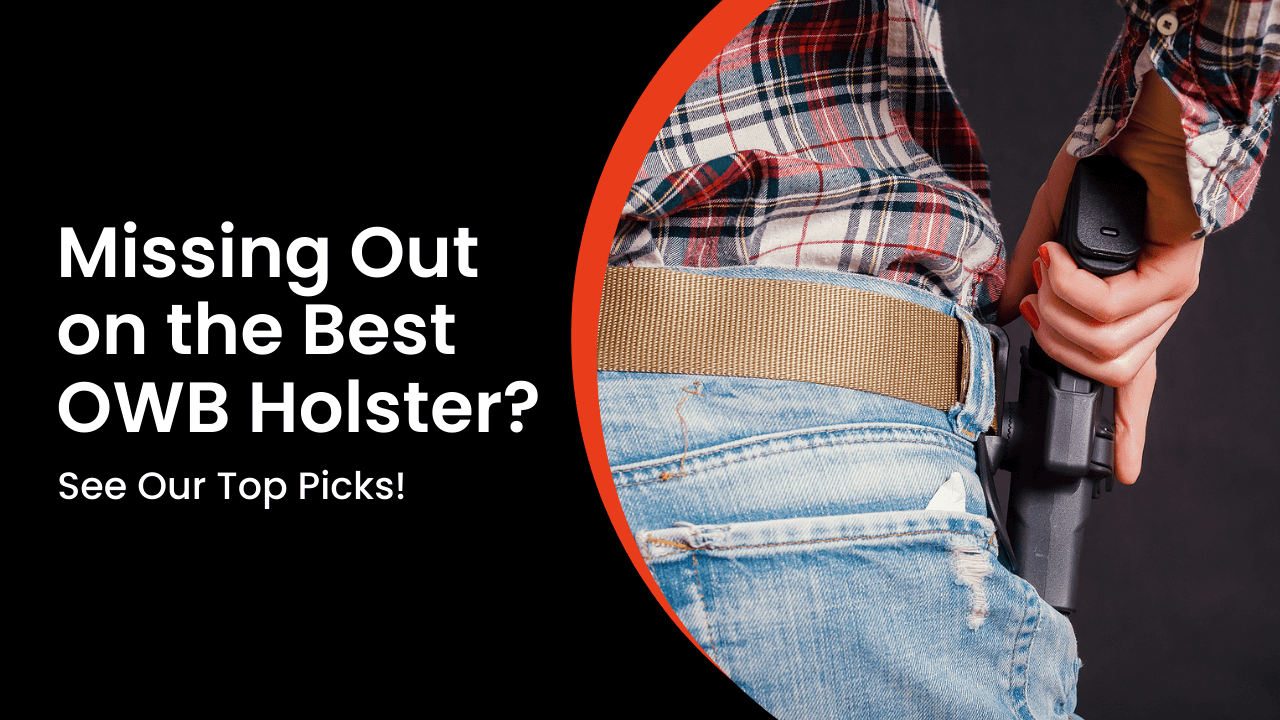Quick Draw Gun IWB Holster of Different Types: Tricks & Tips
Nov 5th 2021
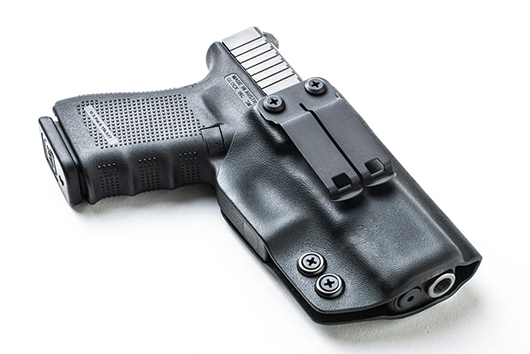
When you hear the words “quick draw,” you probably think of gunslingers from the Old West or competitive matches and shot timers. But gun owners who carry firearms strictly for self-defense also need to draw quickly and smoothly in response to deadly threats — that requires a good holster, solid training, and regular practice.
Shooting Fast
The quick-draw stroke should be smooth and efficient. Remember the expression: “smooth is fast.” If you’re new to firearms or have purchased your first handgun, your priority should be to become familiar with the basic rules of firearms safety:
- All guns are always loaded
- Never let the muzzle cover anything you don’t intend to destroy
- Keep your finger off the trigger until your sights are on the target
- Be aware of your target and what is behind it
Next, you should focus on mastering the fundamentals of pistol marksmanship — grip, stance, sight picture, and trigger control. Once you’re confident in your proficiency regarding these elements, you can begin practicing your draw stroke, knowing that you can safely handle your firearm.
Quick Draw Safety Tips
For a holster to be safe for any practical purpose, it should fully enclose the trigger guard, preventing your index finger from contacting the trigger until the weapon clears the holster.
The construction of the holster also plays a role in safety, especially when reholstering the gun.
When you have a suitable holster, you’ll need to perfect your technique to ensure you’re performing your draw stroke with the utmost safety. Here are a few tips:
Draw
As you draw the weapon and apply a two-handed grip, you need to ensure your support hand does not cover the muzzle as your hands come together.
Remember the second rule of gun safety: “Never let the muzzle cover anything you are not prepared to destroy.” The muzzle of your firearm should always be pointed away from your body and in a safe direction.
Trigger finger
When you draw the firearm, your index finger should remain straight alongside the holster. As the weapon clears the leather or Kydex, your finger should not enter the trigger guard until the muzzle is parallel to the ground.
In the event of an unintentional discharge, whether negligent or due to a mechanical failure, the bullet will travel toward the target and not your knees or feet.
Depending on the kind of surface you’re standing on, a bullet that misses your body can still ricochet or fragment, causing injury indirectly.
When you’re carrying in the appendix position — i.e., between 11 and 1 o’clock — the consequences of a negligent discharge can be more dangerous due to the direction the muzzle of your gun is pointing.
Reholstering
The act of returning the firearm to its holster when you’re either finished shooting, or you’ve stopped the threat can be dangerous if you don’t perform it carefully. Some shooters tend to rotate the handgun to clear the holster mouth, causing the muzzle to point toward their flank.
At no time should you point the muzzle toward your body. The muzzle should be perpendicular to the ground as you holster it. You may need to enter the pistol into the holster from a different direction to avoid this.
By the Numbers
The quick-draw or firing stroke consists of several actions performed in sequence. Instead of focusing on drawing your weapon as quickly as possible in the beginning, aim for consistency and economy of motion — repetition is key.
The position of your holster should be consistent on your gun belt, including the ride height and cant. An adjustable, high-quality holster is, therefore, ideal for this kind of training. Use a durably constructed and rigid gun belt to ensure consistent performance.
Place your strong hand firmly on the weapon. When you acquire a full firing grip, the top of your middle finger should contact the underside of the trigger guard. The webbing between your thumb and index finger should be level with the beavertail or grip safety, depending on the weapon.
At the same time, place your support hand on your belt buckle or abdomen to keep it away from the muzzle. In the Modern Technique, you would extend your support hand to a position ahead of your belt buckle with your palm vertical and thumb pointing upward.
If you draw from the appendix position, you may press your support hand against your chest to remain clear of the upward stroke. You should advance your strong hand first — this requires practice and coordination. If you advance your support hand first, you increase your risk of covering your hand with the gun’s muzzle.
Draw the weapon upward, clearing the holster mouth. Apply a two-handed grip. Your index finger may now enter the trigger guard, assuming the muzzle is parallel to the ground and facing the target. Extend your weapon outward toward the target and acquire your sight picture.
IWB Draw
The draw stroke may be more complicated when carrying IWB. Namely, the need to practice exposing the weapon by sweeping aside a cover garment or lifting a shirt. If you wear a shirt tucked into your waistband, you’ll need to grip the shirt fabric with both hands firmly and pull upward.
As you expose your weapon, you should grip the weapon with your strong hand, while your support hand remains on your clothing.
Once the weapon clears the holster, you can take your support hand off your shirt and join your strong hand on the gun.
What Type of Retention is Best?
Holsters are available with two different types of retention: Active and passive. Active retention is more secure, requiring you to open a fastener or deactivate a locking mechanism to draw your weapon.
While this is ideal for open carry and law enforcement applications, where there’s an increased risk of a criminal assailant attempting to disarm you, it’s unsuitable for a fast draw. Every additional action you must perform before you can draw your weapon adds training time and risk of error.
Passive retention, which relies on friction to keep the weapon in place, is the best option for a quick draw holster. When you place your hand firmly on the weapon, acquiring a full firing grip, you can simply pull upward sharply to break the gun free from the holster’s fit.
Types of Holsters
The type of holster you need for a quick draw depends on several factors.
Non-Belt Holsters
If you’re interested in the fastest draw possible, waistband holsters are the best option for speed. However, several alternatives are available if you can’t conveniently wear a waistband holster due to your individual circumstances.
Pocket holster
If you own a highly concealable firearm, a pocket holster allows you to carry it inside a front pants pocket without the need for a belt. Carrying a handgun inside a pocket without a holster is neither safe nor efficient. The gun could snag on fabric, or its position could shift, limiting accessibility in an emergency.
When suitably holstered, pocket carry is not conducive to a fast draw but can be a viable choice for concealed carry.
The size and weight of your carry gun inherently limit this option for some.
Ankle holster
Like pocket carry, an ankle holster is appropriate for small pistols and revolvers. Usually carried for backup guns, you normally wear an ankle holster wrapped around your non-dominant leg with the weapon on the inside. When you draw, you’ll need to lift your pant leg to expose the holster.
While this holster type can be useful, it is very awkward, and the time it takes to effectively draw and fire a gun carried this way makes it useless in most life or death situations.
Shoulder holster
A shoulder holster uses a harness to suspend the weapon under your non-dominant arm. Shoulder holsters are probably most often associated with police detectives, spies, and bodyguards, but private citizens wear them too.
The shoulder holster is not the fastest holster design to draw from, and it requires that you wear a cover garment, such as a jacket, limiting its seasonal versatility.
Belt Holster Positions
Belt or waistband holsters are the fastest options available, providing the greatest access. Most OWB and IWB holsters use the pancake design, which uses two sheets or panels of material. The gun is sandwiched between these two sheets.
IWB (Inside the Waistband)
IWB (Inside the Waistband)
However, with practice, you can learn to draw from an IWB holster quickly and efficiently, regardless of your preferred carry position. The default position, and one of the fastest, is the strong side — where the gun rides on or behind your dominant side hip. Despite this, appendix carry is continuously gaining traction.
AIWB
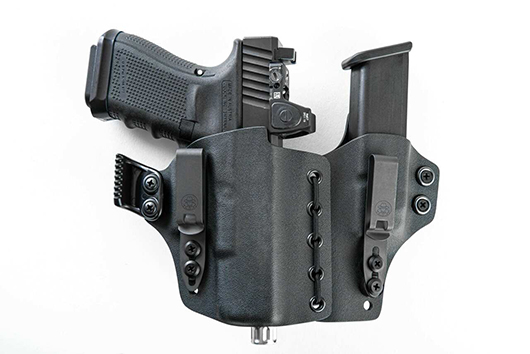
Appendix carry is fast and efficient because the holster is in the front of your abdomen, typically between 11 and 1 o’clock, on or beside your navel. Many gun owners find this position more accessible than strong side, and it is preferable for drawing while seated in a vehicle. When combined with the IWB method, it’s also highly concealable.
OWB (Outside the Waistband)
OWB holsters attach via belt loops rather than clips, generally offer superior access than IWB at the expense of reduced concealability and wardrobe versatility.
Holster Materials
The material that your quick draw holster is made from affects how smoothly you can retrieve your weapon when you need to. While leather holsters remain popular for both self-defense and competitive target shooting, Kydex is more rigid than leather and won’t soften or deform from regular use.
Incognito Concealment Offers the Best Quick Draw Holsters
At Incognito Concealment, our Kydex holsters are suitable for quick draw applications, where smooth operation is critical to defending your life or winning a match. An IWB holster that provides fast, easy access to your weapon and a high degree of concealability is ideal for self-defense. Our Incognito T3 series fulfills those requirements.
Featuring a low-profile design, durable Kydex construction, and an audible “click” on reholstering, our T3 is a superb choice for self-defense.
Call us at (586) 333-4240 — we have the best holsters available for quick draw shooting, ensuring you’re always one step ahead of the bad guys.

